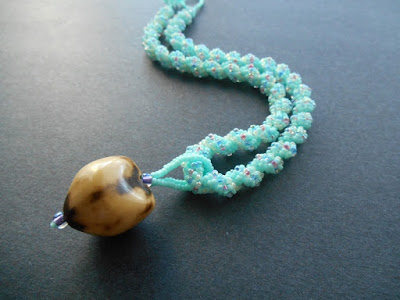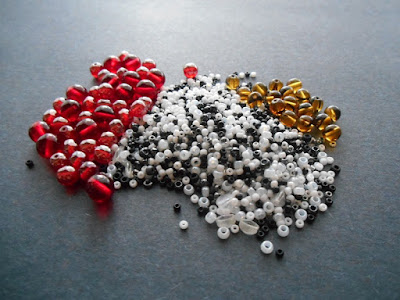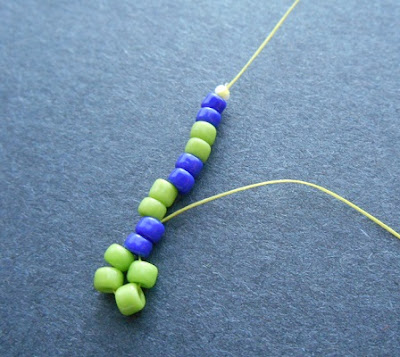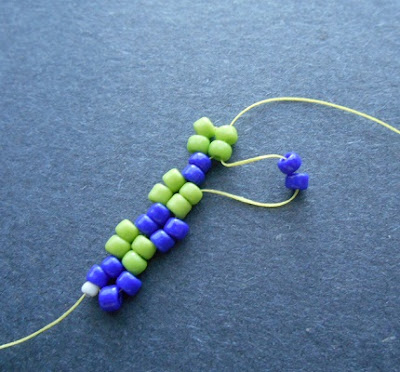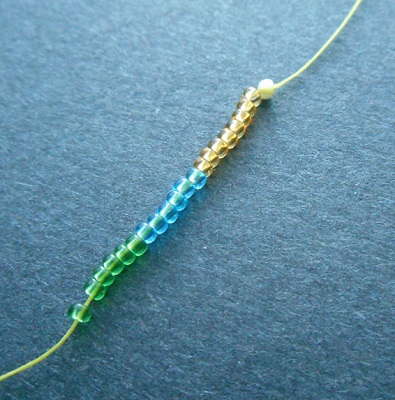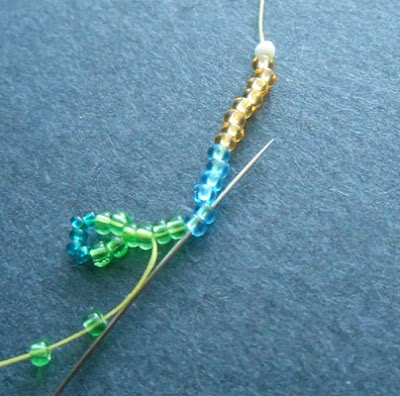
Whenever new beading or jewelry materials come on the scene, it’s always exciting to see where designers will take them. One of the most amazing developments in recent years is soutache and bead embroidery. Beaders who are working with this amazing technique create designs that look like pure magic. Marthe of Poland-based
Ozdoby Ziemi creates a wide variety of jewelry styles – each one a riot of color and curves.
Inspirational Beading: What is your favorite beading or jewelry technique?
Marthe: My favorite and inspiring technique of creation is a soutache embroidery. It took me a lot of time to express myself the way I want and the soutache embroidery is for me the most important and interesting. I started thinking about design, jewelry, vintage things as a teenager. Finally, I went to college to become a forester, but I still kept dreaming about making pretty things - I sketched designs. Then, four years ago I realized that I should to live what I love and I decided right then that is what I was going to do - my new goal was to make pretty things every day.
Soutache embroidery - it is a very labor-intensive technique and it requires precision. However, it is very grateful. This technique is exceptional, because it combines not only a shape and a design, but as well as the colors. You know, when you create a new piece, you link the particular soutache cords and then, you compose them with unlimited variety of stones. In this process you can create something unusual and unique! Thanks to this technique, you can express your vision overall, both in the large forms like necklaces as well as very small as tiny ornaments. Regardless of the form and size, the jewelry, made in this technique, impresses and catches the looks.


In my work I also use the elements of beading embroidery. I’m inspired by different things each season: nature, folk art, religious symbols, cults and subcultures, geometric figures, ancient art and nature, so every collection I make has its own style. I like to explore new areas within each collection. I respect and appreciate the Mother Nature’s color combinations and textures. I am also interested in traditional methods of jewelry creation, e.g. silver jewelry and I am looking for more information about jewelry silver technique.
Inspirational Beading: How did you first learn to do this technique?
Marthe: I am a self-taught. Almost 5 years ago, I found a jewelry made in this technique completely accidentally. At that time, there were very few people working in the soutache technique. Immediately, I was charmed and intrigued by this kind of jewelry. I decided to find out more about this technique. I found the information about this jewelry, and I decided to buy very basic materials to try to do something for myself. I had no problem with a needle because when I was a child I sewed clothes for my dolls. I watched every piece on the Internet and I learned how it was made. Practice makes perfect, so when I achieved a basic level I started to invent my own designs. With time, my technique and design were getting better, so I decided to looking for a better materials. When the first steps, I had no available tutorials, so I had to learn everything myself. Today, I think that it was good for me, because I had a possibility to express my own inner creativity.


Inspirational Beading: Of all the creations you've made with this technique, which one is your favorite?
Marthe: I have the several favorite pieces that I love. Each of them is different and brings other emotions. I spend most of my time brainstorming and doing rough concept sketches. I enjoy this process, as it allows me to free my mind and express myself fully. I use a sketchbook to draw out my ideas, then I gather my materials. But my favorite part of the creative process is watching how the finished pieces end up - they are always a bit different than I planned. That’s part of the fun, and it makes for a great surprise at the end.
I have got two the most favorite pieces that I created in a soutache technique. These are two exceptional necklaces. I like them the most, because in the creation of them, I put a lot of work, time and imagination. I sacrificed them many hours of hard work: sewing, matching stones and joining elements, but - in my opinion – it was worth of it. I'm proud of them. One of them is ivory-colored necklace - ideal for unconventional bride, the second is a kiwi-necklace (I awarded the second place in the competition), inspired by a kiwi fruit.


Inspirational Beading: Can you share any tips for getting started?
Marthe: For getting started:
1. Firstly, if you want to work in this technique, you must be very patient, because the first works are never perfect. You should buy good kinds of materials (high quality strings, threads and a needle - very thin and sharp). Our skills we acquired through exercise, so never give up when your work is not ideal. Never throw away the first works, because through them you can see your progress you made!
2. If you want to start create jewelry you must select stones and ornaments that are drilled. It will be easier for you to sew them to strings. After that, you can use cabochons in the next stages of learning.
3. We learn by observing others, so follow others works and artists. It is very helpful to understand and learn the techniques, but remember - never copy the work of others!
Inspirational Beading: If someone had to choose to learn only one technique, would you recommend this one?
Marthe: If you had only enough time and patient, I recommend this technique. Thanks to them you can play with shapes, colors, space (3D projects). Soutache technique is used not only to create a spectacular jewelry, but to make many useful things. You can decorate your clothes (dresses applications), make a beautiful lampshades, bookmarks or even - images.
You can also make something special for others! In Poland we have The Great Orchestra of Christmas Charity. One year ago, I and my friends, who love soutache technique, we created a beautiful
breastplate and show bridle (pieces of riding equipment used on horses) to help sick children.


Inspirational Beading: What is your least favorite thing about working with this technique?
Marthe: Soutache jewelry is usually one-sided. To protect them you must finish them, where necessary with leather, felt, lace or alacantara (back) and also you must impregnate them with Professional Nano Fabric Protection which also protects from damp. Thanks to that, you will be able to enjoy their beauty for a long time after the purchase.
This stage of creation is the least liked by me, because the process is over and you only need to fine-tune all nicely and finishing off the pieces. However, when this step is completed, you can really enjoy the final effect of the jewelry you made.
Inspirational Beading: Do you have a favorite color or color combination to use it with?
Marthe: I do not have a favorite set of the colors, because I like to mix and match colors in different - sometimes surprising - combinations. It gives me joy and it is also an awesome fun. Very often, the source of inspiration for me is the shape, color and structure of stones, minerals or beads. I choose the strings in this way to best bring out the beauty or the color of the mineral. As you know, quite often I use turquoise color, I like to mix it with many other colors to create something unusual.

Inspirational Beading: What is your all-time favorite material or bead to use in your work?
Marthe: I most like to use in my work natural minerals, the highest quality materials, precious stones, soutache, silver beautifully stained precious and semi-precious. I use also crystals and beads of glass, but I try to my jewelry was the most natural. It is associated with the message of my brand to create things closest nature, our environment. Hence the name of my brand - in direct translation 'Ozdoby Ziemi' (from Polish to English) means 'The Ornaments from the Earth'.
Inspirational Beading: Who do you hope to inspire with your designs?
Marthe: My collection of handmade jewelry is dedicated to the exceptional women, who appreciate the beauty and originality. My shop - Ozdoby Ziemi - offers mainly unique earrings, bracelets, necklaces, brooches, rings in various styles, sizes and colors. If you're looking for exceptional ooak jewellery and you want to express yourself with jewelry you wear - you're in the right place!
You can see more of Marthe’s beautiful soutache work in her Etsy shop Ozdoby Ziemi. You can also follow along on Facebook, Instagram and Pinterest for her latest inspirations and creations!
Mortira
Subscribe *
Facebook *
Google+
Send your beading questions to InspirationalBeading@gmail.com
Support Inspirational Beading for bonus tutorials and more!
Copyright 2016
Inspirational Beading and
Ozdoby Ziemi





















